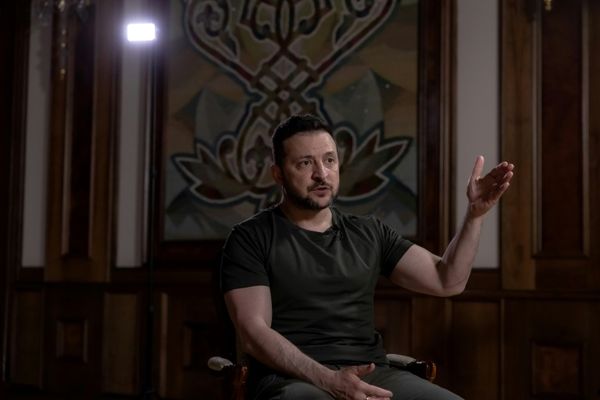
Brian May has paid tribute to the late Duane Eddy, describing how the rock ’n’ roll godfather’s Rebel-Rouser changed guitar forever, and recalling the time he met his hero and had the honour of watching him playing his own homemade electric guitar, the Red Special.
Eddy, who died on 30 April, aged 86, following a battle with cancer, was of the first generation of rock ’n’ roll guitar heroes, and his influence left a lasting impression on the generation to follow – not least May. Hearing Eddy’s signature style, picking out notes on the guitar’s lower register, letting them bloom in the reverb, left a lasting impression on the Queen guitarist.
Taking to Instagram, May expressed sorrow at the news of Eddy’s death, calling him an “inspiration and a hero” to both him and his father, sharing pictures of the moment he finally got to meet him backstage at a Queen and Adam Lambert show.
“I was so proud to meet him in 2017 and spend a little time, and proudly invite him to our show in Nashville, Tennessee,” wrote May, appropriately, accompanying the post with some audio courtesy of a bona fide Duane Eddy classic, Rebel Rouser [often stylised as Rebel-‘Rouser] – a composition May wants to talk about.
“This track was one of the very first solo rock guitar hits ever,” he continues. “Duane’s sound was distinctive, original and completely cutting edge at the time. His style involved bending low strings of his guitar, an earthy exciting innovation.”
Co-written with Lee Hazlewood, released in 1958, Rebel Rouser was sometimes credited to “Duane and his Twangy Guitar” and both are in full effect. There’s something insouciant about Eddy’s note choices; his playing is so spare and yet just enough, speaking to something fundamental about the electric guitar through a tube amp with reverb. It sounds like Sam Elliott's cowboy voice. May says Eddy didn’t need a million notes to be a “revolutionary” guitar player.
It might sound like nothing out of the ordinary in these days of a million flashy electric guitar players, but at that time it was revolutionary – freeing the guitar from its former stiffness, and making it talk
Brian May
“His style involved bending low strings of his guitar, an earthy exciting innovation,” he writes. “The first note of this Rebel Rouser riff is a low F Sharp on the bottom string of his guitar, hit, bent up to a G and back down again before the second note – the low E – is hit. It might sound like nothing out of the ordinary in these days of a million flashy electric guitar players, but at that time it was revolutionary – freeing the guitar from its former stiffness, and making it talk.”
On the London Records pressing of the 7-inch single, the back cover offers some neat biographical detail on Eddy, telling us is an “expert angler” and a strong swimmer, who has a record collection that features Segovia and Satchmo [Louis Armstrong] alike, and that he enjoys pizza and Mexican food.
But the liner notes' final paragraph is instructive; it sums up neatly what Eddy was getting at with that style. It was adventurous and new and yet there was something unmistakably primal.
“Duane Eddy’s guitar might be characterised as rock-a-billy copiously embellished with the blues,” reads the blurb. “The hallmark of this style is a predominant use of the single bass string which gives us a driving yet haunting quality unmatched for freshness and vitality. There is within his work a certain elemental simplicity wedded to an almost unrestrained primitivism which results in a sound that is exciting even to the most jaded ear.”
Quite so. That was written in 1958. In 2024, that sound still sounds fresh. It is unmistakably the sound of the ‘50s but the passage of time has not shorn it of its power or sense of danger.
Speaking to MusicRadar in 2019, Eddy explained how a modded Magnatone tube amp was a key element to his Rebel Rouser tone.
“There was a bass player in Phoenix named Buddy Wheeler, who was also a pedal steel guitar player,” said Eddy. He and a friend of his, Dick Wilson, who’s a guitar player in Phoenix, modified Magnatone amps. They originally had two Jensen speakers in them. Well, they did away with those and put a 15-inch JBL and a tweeter in the amp, a 100-watt power pack and a spring echo, and then hooked it all together. Then they covered the case with black Naugahyde with a white grille front and charged $100 for it, which was a lot of money in 1957. They did that for several guitar players around town.”
Eddy described the Magnatone as one of the best amps in the world, even better than Chet Atkins’ legendary Standel.
“When I played through the Standel it would break up at a certain point,” he said. “But you couldn’t get mine to break up no matter how hard you hit the notes. They just rang clear as a bell.”
Sadly there is no video footage of Eddy playing May’s Red Special through a Vox AC30, and how that would compare the Gretsch/Magnatone fundamentals of his typical rock ’n’ roll rig. But then May has spoken about this before, telling Total Guitar in 2020 that it wouldn’t matter what Eddy was playing through – he would still sound like him.
Duane Eddy twanged the thang in the late ‘50s and ‘60s and you can hear his character sound appearing throughout the decades of popular music
Jimmy Page
“I played with Hank Marvin, and he picked up my guitar and I thought, ‘Oh my god, what’s that going to sound like?’ Well, folks, it sounded like Hank Marvin!” said May. “It’s in the fingers! I’ve had that pleasure of discovery many times. Duane Eddy is the same. It doesn’t matter what guitar he picks up, you know, and he played my guitar when we were on tour, which is a thrill.
“It’s just there. It’s in the way people play, I think. And I’ve had that said about me. I remember I’ve picked up other people’s guitars and they went, ‘Oh, so it’s not your guitar. It’s you, is it?’ And I go, ‘Well, I dunno!’”
Jimmy Page also posted an Instagram tribute to Eddy. Page would have been 19 when he first saw Eddy play support Gene Vincent at his show at the Granada in Kingston, November 1963.
“Duane Eddy twanged the thang in the late ‘50s and ‘60s and you can hear his character sound appearing throughout the decades of popular music,” wrote Page. “He will be missed and my thoughts are with his family.”







